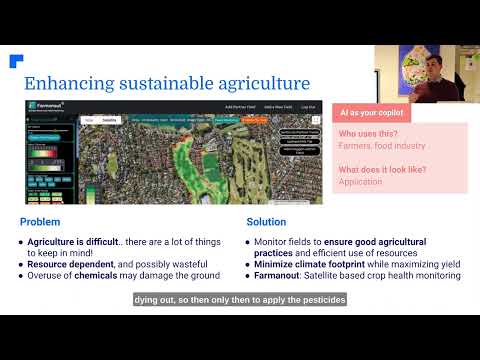UK REIT Market Analysis: Navigating Property Income Investments in Uncertain Times
In the ever-evolving landscape of UK commercial property portfolios, understanding the intricacies of property income investments and real estate investment trusts (REITs) is crucial for investors seeking to navigate uncertain times. As we delve into this comprehensive analysis, we’ll explore the latest trends, performance metrics, and strategies that shape the UK REIT market.

“The FTSE EPRA Nareit Global Index tracks over 490 REITs worldwide, representing a market cap of $1.8 trillion.”
Understanding the UK REIT Market Landscape
The UK REIT market has been a cornerstone of property income investment for many years, offering investors a unique opportunity to access diverse real estate portfolios without the need for direct property ownership. As we navigate through these uncertain times, it’s essential to understand the current state of the market and the factors influencing its performance.
Real estate investment trusts (REITs) have become increasingly popular among investors seeking stable income streams and potential capital appreciation. These investment vehicles allow individuals to invest in large-scale, income-producing real estate, providing a level of diversification and liquidity that is often challenging to achieve through direct property investments.
Stock Market Moving Averages and Their Impact
One of the key indicators we use to analyze the UK REIT market is the stock market moving average. This technical analysis tool helps us identify trends and potential turning points in REIT stock prices. Let’s take a closer look at how moving averages are influencing the current market sentiment.
- 200-day Moving Average: A critical benchmark for long-term trends
- 50-day Moving Average: Offers insights into medium-term price movements
- Crossovers: When shorter-term averages cross longer-term ones, signaling potential trend changes
For instance, Picton Property Income Limited (LON:PCTN) recently experienced a downturn, with its shares falling below the crucial 200-day moving average. This movement can be a significant indicator of market sentiment and potential future price action.
Dividend Yields for REITs: A Key Attraction
One of the primary reasons investors are drawn to REITs is their attractive dividend yields. In the current low-interest-rate environment, REITs often offer higher income potential compared to traditional fixed-income investments.
“UK REITs typically offer dividend yields between 3-6%, outperforming many traditional fixed-income investments.”
However, it’s crucial to analyze dividend yields in conjunction with other financial metrics to ensure sustainability. For example, Picton Property Income recently declared a dividend of GBX 0.93 ($0.01), yielding 1.3%. While this may seem attractive, investors must consider the company’s payout ratio and overall financial health.
Property Investment Performance Metrics
To gain a comprehensive understanding of the UK REIT market, we need to examine various performance metrics that indicate the health and potential of these investments:
- Net Asset Value (NAV): Reflects the underlying value of the property portfolio
- Price-to-NAV Ratio: Indicates whether a REIT is trading at a premium or discount to its asset value
- Funds from Operations (FFO): A key measure of REIT profitability
- Occupancy Rates: Crucial for understanding the demand for commercial properties
These metrics provide valuable insights into the performance and potential risks associated with UK REITs. For instance, a high occupancy rate typically indicates strong demand for commercial properties, which can lead to stable or increasing rental income.
Commercial Property Occupancy Rates: A Key Indicator
Commercial property occupancy rates play a crucial role in the performance of UK REITs. High occupancy rates generally translate to stronger rental income streams, which in turn support dividend payments to investors. As we analyze the current market, we’re seeing varied occupancy rates across different property sectors:
- Office spaces: Facing challenges due to remote work trends
- Retail properties: Experiencing fluctuations with the rise of e-commerce
- Industrial and logistics: Showing resilience and high demand
- Residential: Maintaining stability in most urban areas
Understanding these trends is crucial for investors looking to make informed decisions in the UK REIT market. It’s important to note that occupancy rates can vary significantly between different REITs and property types, highlighting the importance of thorough research and diversification.
The Influence of FTSE EPRA Nareit Global Index
The FTSE EPRA Nareit Global Index plays a significant role in shaping market dynamics for UK REITs. This index provides a comprehensive benchmark for listed real estate companies and REITs worldwide, offering investors a valuable tool for assessing performance and making informed investment decisions.
Key points about the FTSE EPRA Nareit Global Index:
- Tracks over 490 REITs globally
- Represents a substantial market capitalization
- Offers insights into global real estate trends
- Serves as a performance benchmark for UK REITs
By monitoring this index, investors can gain valuable insights into global real estate trends and how UK REITs are performing in comparison to their international counterparts.

Diversified Real Estate Investment Strategies
In these uncertain times, diversification remains a crucial strategy for investors in the UK REIT market. By spreading investments across various property types and geographic locations, investors can potentially mitigate risks and optimize returns. Here are some diversification strategies to consider:
- Sector Diversification: Investing in REITs that focus on different property types (e.g., office, retail, industrial, residential)
- Geographic Diversification: Considering REITs with properties in various UK regions or even international exposure
- Size Diversification: Balancing investments between large-cap and small-cap REITs
- Strategy Diversification: Mixing income-focused REITs with those prioritizing capital appreciation
Implementing a well-balanced, diversified approach can help investors navigate the complexities of the UK REIT market and potentially achieve more stable long-term returns.
Financial Ratios: A Deep Dive
When analyzing UK REITs, it’s crucial to examine various financial ratios to gain a comprehensive understanding of their financial health and performance potential. Let’s explore some key ratios:
- Price-to-Earnings (P/E) Ratio: Indicates how much investors are willing to pay for each pound of earnings
- Debt-to-Equity Ratio: Measures a REIT’s financial leverage
- Current Ratio: Assesses a REIT’s ability to meet short-term obligations
- Quick Ratio: A more stringent measure of liquidity
- Payout Ratio: Indicates the sustainability of dividend payments
For example, Picton Property Income Limited’s recent financial metrics reveal a PE ratio of -6,170.00, indicating potential financial instability. The company also has a debt-to-equity ratio of 43.63, a current ratio of 3.74, and a quick ratio of 2.25. These figures provide valuable insights into the company’s financial position and potential risks.
Market Capitalization Trends
Market capitalization is a crucial metric in understanding the size and relative importance of UK REITs within the broader market. Larger market caps often indicate more established and potentially stable REITs, while smaller caps might offer growth potential but with higher risk.
Current trends in market capitalization for UK REITs:
- Large-cap REITs: Generally seen as more stable, often focusing on prime properties in major cities
- Mid-cap REITs: May offer a balance of stability and growth potential
- Small-cap REITs: Often specializing in niche markets or emerging property sectors, potentially offering higher growth but with increased risk
For instance, Picton Property Income Limited’s market capitalization stands at £336.86 million, placing it in the small to mid-cap range. This positioning can offer both opportunities and challenges for investors.
Factors Driving Current Market Sentiment
Several factors are currently influencing market sentiment in the UK REIT sector:
- Economic Uncertainty: The ongoing economic challenges post-Brexit and COVID-19
- Interest Rate Environment: Low interest rates have made REITs attractive, but potential rate hikes could impact performance
- Changing Work Patterns: The shift towards remote work affecting office-focused REITs
- E-commerce Growth: Impacting retail-focused REITs while boosting industrial and logistics properties
- Government Policies: Changes in tax regulations or property laws can significantly affect REIT performance
Understanding these factors is crucial for investors looking to make informed decisions in the UK REIT market. It’s important to stay updated on these trends and their potential impact on different types of REITs.
Competitive Edge in Investment Approach
To gain a competitive edge in UK REIT investments, consider the following strategies:
- In-depth Research: Conduct thorough due diligence on individual REITs, their management teams, and property portfolios
- Market Timing: While challenging, understanding market cycles can help in making timely investment decisions
- Sector Specialization: Focus on REITs operating in sectors you understand well or believe have strong growth potential
- Dividend Reinvestment: Consider reinvesting dividends to compound returns over time
- Regular Portfolio Review: Continuously assess your REIT investments and rebalance as needed
By implementing these strategies, investors can potentially enhance their returns and better navigate the complexities of the UK REIT market.
UK REIT Performance Comparison
| REIT Name | Market Cap (£bn) | Dividend Yield (%) | Price-to-NAV Ratio | 1-Year Total Return (%) | 3-Year Annualized Return (%) | Occupancy Rate (%) | Sector Focus |
|---|---|---|---|---|---|---|---|
| British Land | 4.2 | 5.1 | 0.65 | -8.3 | -2.7 | 94 | Office, Retail |
| Land Securities | 5.1 | 5.8 | 0.70 | -5.6 | -1.9 | 93 | Office, Retail |
| Segro | 10.8 | 3.2 | 1.05 | 12.4 | 8.6 | 97 | Industrial |
| Hammerson | 1.1 | 4.7 | 0.45 | -15.2 | -9.8 | 89 | Retail |
This table provides a snapshot of key UK REITs, offering a quick comparison across essential metrics. It’s evident that industrial-focused REITs like Segro have performed well, while retail-centric REITs such as Hammerson have faced challenges. These disparities highlight the importance of sector diversification in REIT investments.
The Role of Technology in REIT Analysis
In today’s digital age, technology plays a crucial role in analyzing and managing REIT investments. Advanced tools and platforms are enabling investors to make more informed decisions. While we’re discussing property investments, it’s worth noting that technological advancements are not limited to real estate. For instance, in the agricultural sector, companies like Farmonaut are leveraging satellite technology and AI to revolutionize farm management.
Farmonaut offers satellite-based farm management solutions that provide valuable insights for agricultural productivity. While this technology is not directly related to REITs, it demonstrates how data-driven approaches are transforming various sectors, including real estate and agriculture.
For those interested in exploring Farmonaut’s innovative solutions:
For developers interested in integrating satellite and weather data into their own systems, Farmonaut also offers an API with comprehensive developer documentation.
Future Outlook for UK REITs
As we look to the future of UK REITs, several trends and factors are likely to shape the market:
- ESG Focus: Increasing emphasis on environmental, social, and governance factors in property investments
- Tech Integration: Growing adoption of proptech solutions for property management and analysis
- Flexible Spaces: Continued demand for adaptable commercial spaces in response to changing work patterns
- Residential REITs: Potential growth in the build-to-rent sector
- Brexit Impact: Ongoing effects of the UK’s exit from the EU on property markets and investment flows
Investors should keep these factors in mind when formulating their long-term REIT investment strategies.
Conclusion: Navigating the UK REIT Market
The UK REIT market offers significant opportunities for income-seeking investors, but it also presents challenges in these uncertain times. By understanding key metrics, market trends, and employing diversified strategies, investors can potentially navigate these complexities successfully.
Remember, thorough research, regular portfolio review, and staying informed about market developments are crucial for success in REIT investments. While the market may face short-term volatility, REITs continue to offer attractive long-term prospects for those seeking property income investments.
Earn With Farmonaut: Affiliate Program
Earn 20% recurring commission with Farmonaut’s affiliate program by sharing your promo code and helping farmers save 10%. Onboard 10 Elite farmers monthly to earn a minimum of $148,000 annually—start now and grow your income!
Farmonaut Subscriptions
FAQ Section
Q: What are the main advantages of investing in UK REITs?
A: UK REITs offer several advantages, including regular income through dividends, portfolio diversification, professional management of real estate assets, and liquidity compared to direct property investments.
Q: How do economic uncertainties affect UK REITs?
A: Economic uncertainties can impact UK REITs in various ways, including fluctuations in property values, changes in occupancy rates, and potential impacts on rental income. However, diversified REITs may be better positioned to weather economic challenges.
Q: What should investors look for when analyzing UK REITs?
A: Key factors to consider include dividend yield, price-to-NAV ratio, occupancy rates, sector focus, management quality, and debt levels. It’s also important to assess the REIT’s property portfolio and its alignment with current market trends.
Q: How does the FTSE EPRA Nareit Global Index influence UK REITs?
A: The FTSE EPRA Nareit Global Index serves as a benchmark for listed real estate companies and REITs worldwide. It influences UK REITs by providing a global context for performance comparison and helping investors gauge the relative strength of UK REITs in the global market.
Q: Are there any tax advantages to investing in UK REITs?
A: Yes, UK REITs offer tax advantages. They are exempt from corporation tax on their property rental business profits and capital gains from property sales. However, individual investors may still be subject to tax on dividends received, depending on their personal tax situation.
In conclusion, the UK REIT market offers a unique opportunity for property income investments, but it requires careful analysis and strategic decision-making. By staying informed about market trends, understanding key performance metrics, and employing diversified investment strategies, investors can potentially navigate these uncertain times successfully in the UK REIT market.








Great blog! Very informative and well-written. Keep up the good work! Discover JSRGroup SunCity, the leading real estate company in Telangana and Andhra Pradesh. Explore our Ventures and locate your perfect house today.
gated community residential layout project